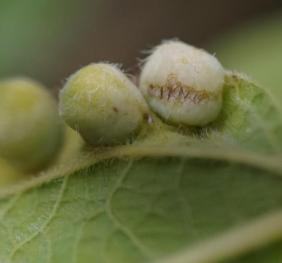
Scientific name: Celtis occidentalis
Common name: hackberry
Native: Yes
Native range: Native to much of North America, including southeastern Canada, New England, the Midwest, and the southeastern and south-central United States [3].
Distribution in North America: Click to view the USDA Plants Database page for C. occidentalis.
USDA Zones: 2-9 [2]
Maximum age: Lives to between 150 and 200 years maximum [3].
Ecology: A variety of birds and small mammals consume the fruit, while the foliage provides cover for deer, birds, and small mammals [1,2,3]. It is also home to various butterfly and moth species, including the wild cherry sphinx, Sphinx drupiferarum [5].
Ethnobotany: It has little value as lumber, but is commonly used as firewood [1,2,3]. Its hardiness also lends it to urban plantings and bonsai [2]. Indigenous American groups use the tree for as a medicine to promote reproductive health and its berries in food [2,3,4]. In particular, the Haudenosaunee use a tea made of the bark to regulate menstrual cycles [4].
Some content on this page is saved in PDF format. To view these files, download Adobe Acrobat Reader free. If you are having trouble reading a document, request an accessible copy of the PDF or Word Document.
